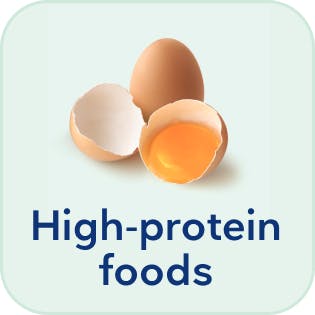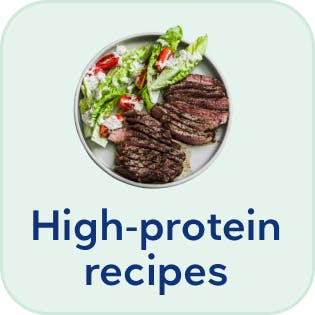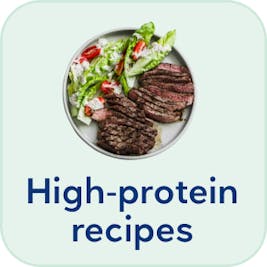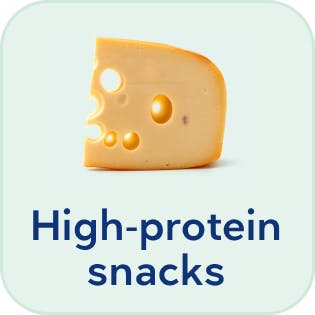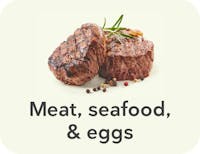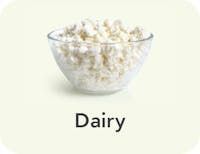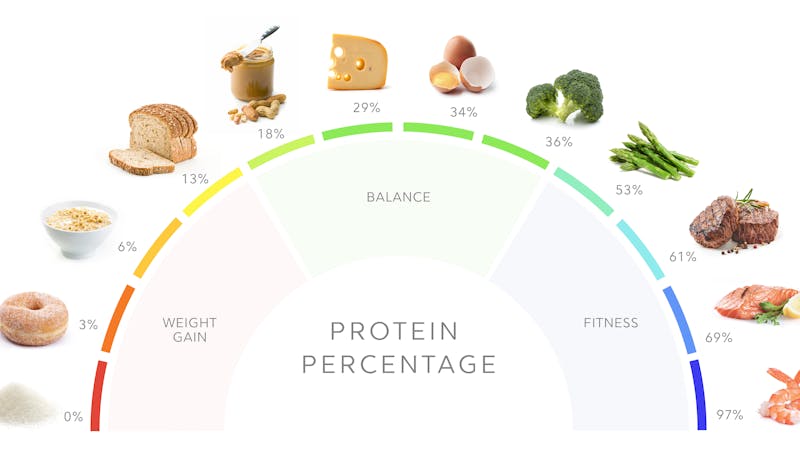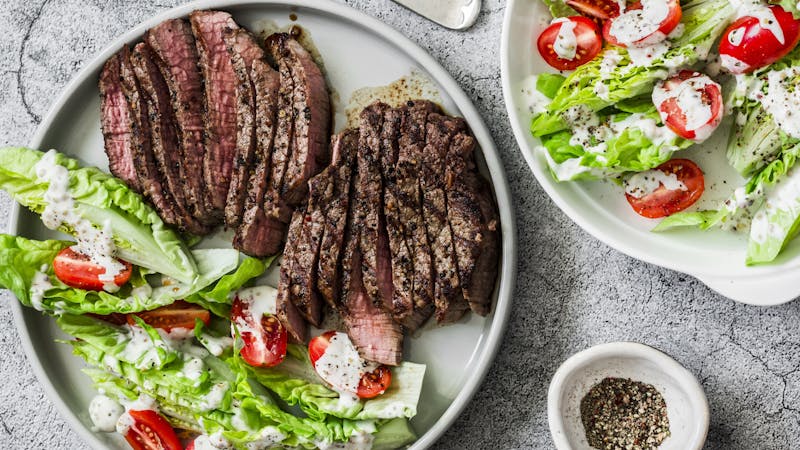The best high-protein nuts
Nuts are a favorite food among many people, including those who follow low-carb, plant-based, or Mediterranean diets. Are nuts high in protein? Although they are nutritious, their protein content isn’t that impressive because they are high in fat and total calories.
The good news is, you can still enjoy nuts on a low-carb diet — if you stick to modest portions. Which nuts are highest in protein? Read on to find out how different nuts rank on the protein scale.
The image below shows the protein as a percentage of calories for different nuts.The higher the number, the more protein the food provides per calorie.
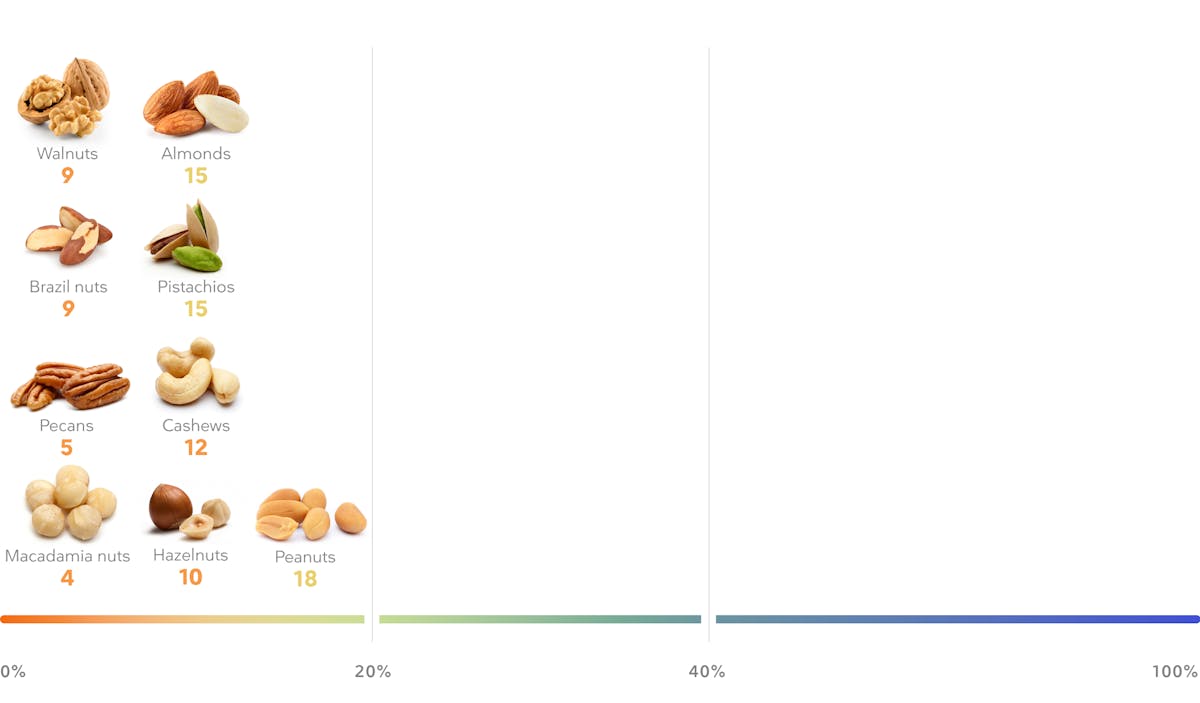





Key takeaways
Protein in nuts. Nuts contain some protein, along with vitamins and minerals. However, they don’t provide a lot of protein per calorie. Learn moreKeep nut portion sizes small. Nuts are tasty, high in calories, and all too easy to overeat. Learn more
The best high-protein nuts. Some nuts provide more protein than others. Peanuts are at the top of the list, while macadamia nuts are at the bottom. Learn more
More high-protein guides
More high-protein guides
Protein in nuts
Nuts are dried seeds that have hard, inedible shells. Although peanuts are technically legumes, they are often grouped with tree nuts because they have similar nutrition profiles, texture, and taste.
Nuts contain protein, fiber, fat (mostly monounsaturated and polyunsaturated fatty acids), vitamin E, magnesium, and other vitamins and minerals.
How much protein do nuts provide? You’ll get about 2 to 7 grams of protein per ounce (30 grams) — approximately one small handful — depending on the type of nut.
However, the protein percentage of all nuts is low. This means that they don’t provide much protein per calorie.
The protein percentage is the portion of a food’s calories, excluding fiber, that come from protein.1
Nuts contain protein, carbs, and fat. But they have far more fat than protein or carbs. Because most of the calories in nuts come from fat, their protein percentages are very low.
Additionally, unlike animal foods and soy, nuts are low in some of the essential amino acids (the building blocks of protein) you need to get from food every day.23 They do provide different essential amino acids that are limited in other plants, which can be beneficial for people who eat vegan or vegetarian diets.4
So while nuts can supply your body with some protein, you’ll get far more protein for fewer calories by eating foods from our meat, dairy, and plant-based protein food guides. Several high-protein snacks are also better options than nuts for maximizing protein per calorie.
How much protein do you need? Aim to eat at least 90 grams of protein per day if you’re a woman and 120 grams if you’re a man of average height and build. Eat more if you’re a man taller than 6 feet (183 cm) or a woman taller than 5 feet 6 inches (168 cm) or if you’re very physically active. Eat less if you’re shorter or have a petite frame.
In this guide, we provide both the protein percentages and gram amounts per serving for nuts.5 These are based on average values. The protein percentages and gram amounts can vary slightly depending on growing conditions, nut species, and other factors.
Avoid eating too many nuts
While it’s fine to enjoy nuts in small amounts, it isn’t a good idea to eat too many.
First, you’ll get a lot of non-protein calories, mainly from fat. Although fat makes food taste better, eating too much can dilute the amount of protein in your diet. Strong research suggests that eating high-protein foods can help you feel full and satisfied, lose fat, and maintain muscle.6
By filling up on nuts and other foods that contain mostly fat and relatively little protein, you’re likely to take in more calories than needed to lose or maintain your weight.
Another reason to be careful with nuts is that they’re extremely easy to overconsume — especially when they’re eaten straight from a container or bag.7 Once you start eating them, it can be tough to stop.
How can you avoid overdoing nuts? Portion out about an ounce (30 grams) of nuts or one to two tablespoons of peanut butter and then put the container or jar away. Eat nuts as a snack, sprinkle chopped nuts on a salad, or add them to recipes.
The best high-protein nuts
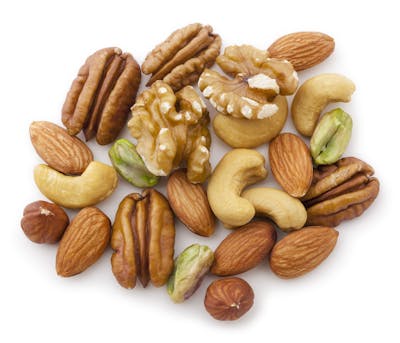



In addition to providing potential health benefits, nuts are also a convenient choice since they’re portable and shelf-stable. So, unless you have an allergy or sensitivity to nuts, there is no reason to give them up. Just keep portions small.
Below are the protein percentages and grams of protein, fiber, and net carbs per ounce (30 grams) of nuts, unless otherwise noted:9 Note: If you eat a strict keto or very low-carb diet, it may be best to pay more attention to the net carb content of nuts than the protein percentage.
- Peanuts
Protein percentage: 18%
7.3 grams of protein, 2.5 grams of fiber, and 2.5 grams of net carbs per serving (approximately 1/4 cup or 35 peanuts, or 1.75 tablespoons of peanut butter) - Almonds
Protein percentage: 15%
6.2 grams of protein, 3.5 grams of fiber, and 2.5 grams of net carbs per serving (approximately 1/4 cup or 22 almonds, or 1.75 tablespoons of almond butter) - Pistachios
Protein percentage: 15%
5.7 grams of protein, 3 grams of fiber, and 4.5 grams of net carbs per serving (approximately 1/4 cup or 49 pistachios) - Cashews
Protein percentage: 12%
5 grams of protein, 1 gram of fiber, and 7.5 grams of net carbs per serving (approximately 20 cashews) - Hazelnuts
Protein percentage: 10%
4.2 grams of protein, 2.8 grams of fiber, and 2 grams of net carbs per serving (approximately 20 hazelnuts) - Walnuts
Protein percentage: 9%
4.3 grams of protein, 2 grams of fiber, and 2 grams of net carbs per serving (approximately 15 walnut halves) - Brazil nuts
Protein percentage: 9%
2.7 grams of protein, 1 gram of fiber, and 0.7 grams of net carbs per serving (approximately four Brazil nuts). Note: Limit intake to a maximum of four Brazil nuts in any one day due to their high selenium content. Avoid eating more than two Brazil nuts per day on a regular basis. - Pine nuts
Protein percentage: 8%
3.9 grams of protein, 1 gram of fiber, and 2.5 grams of net carbs per serving (approximately one-quarter cup of pine nuts) - Pecans
Protein percentage: 5%
2.6 grams of protein, 2.7 grams of fiber, and 1 gram of net carbs per serving (approximately 19 pecan halves) - Macadamia nuts
Protein percentage: 4%
2.2 grams of protein, 2.4 grams of fiber, and 1.5 grams of net carbs per serving (approximately 10 to 12 macadamia nuts)
Summary
While nuts may not be the best protein source, choosing types with higher protein percentages and lower net carb content can be a tasty addition to any diet. Just remember to limit portion sizes and ensure you get enough protein from other sources such as meat, seafood, eggs, beans, and soy.
Recipes featuring nuts
Here are a few of our favorite high-protein recipes that get a boost of flavor and crunch from nuts:
Learn more about protein
The best high-protein nuts - the evidence
This guide is written by Franziska Spritzler, RD and was last updated on June 19, 2025. It was medically reviewed by Dr. Bret Scher, MD on May 26, 2022.
The guide contains scientific references. You can find these in the notes throughout the text, and click the links to read the peer-reviewed scientific papers. When appropriate we include a grading of the strength of the evidence, with a link to our policy on this. Our evidence-based guides are updated at least once per year to reflect and reference the latest science on the topic.
All our evidence-based health guides are written or reviewed by medical doctors who are experts on the topic. To stay unbiased we show no ads, sell no physical products, and take no money from the industry. We're fully funded by the people, via an optional membership. Most information at Diet Doctor is free forever.
Read more about our policies and work with evidence-based guides, nutritional controversies, our editorial team, and our medical review board.
Should you find any inaccuracy in this guide, please email andreas@dietdoctor.com.
Fiber isn’t included in the calorie count because it’s generally accepted that humans don’t produce the enzymes needed to break down fiber:
Gut Microbes 2017: Dietary fiber and prebiotics and the gastrointestinal microbiota [overview article; ungraded]
Instead, fiber passes through your system until it reaches your colon, where it is either fermented by bacteria or eliminated, depending on the type of fiber:
International Journal of Molecular Sciences 2017: Gut fermentation of dietary fibres: physico-chemistry of plant cell walls and implications for health [overview article; ungraded] ↩
Of the 20 amino acids needed for human health, nine are essential, meaning your body can’t make them on its own. Your body can recycle and reuse some of the amino acids that are already in your body, but most of them must be replenished by your diet:
International Journal for Vitamin and Nutrition Research 2011: Protein turnover, ureagenesis and gluconeogenesis [overview article; ungraded] ↩
Nuts and peanuts are low in the essential amino acids lysine and isoleucine:
The British Journal of Nutrition 2006: Nuts: source of energy and macronutrients [review article; ungraded]
Nutrients 2020: Plant proteins: Assessing their nutritional quality and effects on health and physical function [review article; ungraded] ↩
Although nuts are low in lysine, they are high in methionine. Beans are low in methionine but high in lysine. Combining beans and nuts will therefore make a complete protein with adequate amounts of all essential amino acids. ↩
We obtained nutrition information from FoodData Central, the USDA’s nutrient profile database. ↩
Systematic reviews of randomized trials — considered the strongest evidence — have repeatedly demonstrated this:
Nutrition Reviews 2021: Dose–response relationship between protein intake and muscle mass increase: a systematic review and meta-analysis of randomized controlled trials [systematic review of randomized trials; strong evidence]
Journal of the American College of Nutrition 2004: The effects of high protein diets on thermogenesis, satiety and weight loss: a critical review [systematic review of randomized trials; strong evidence]
Nutrition Reviews 2016: Effects of dietary protein intake on body composition changes after weight loss in older adults: a systematic review and meta-analysis [systematic review of randomized trials; strong evidence]
The Journal of Nutrition 2013: Normal protein intake is required for body weight loss and weight maintenance, and elevated protein intake for additional preservation of resting energy expenditure and fat free mass [randomized trial; moderate evidence] ↩
According to a review of randomized trials, people who carry excess weight often end up taking in more calories when they eat nuts:
Critical Reviews in Food Science and Nutrition 2018: Effect of nuts on energy intake, hunger, and fullness, a systematic review and meta-analysis of randomized clinical trials [strong evidence] ↩
Nutrients 2017: Nuts and human health outcomes: a systematic review [strong evidence] ↩
Recent research suggests we don’t absorb some of the fat in tree nuts, based on clinical trials testing the digestibility of walnuts, almonds, and pistachios. It’s estimated that nuts provide approximately 5 to 21% fewer calories from fat than listed in the USDA database. This could slightly increase their protein percentages by 2 to 3%:
The Journal of Nutrition 2016: Walnuts consumed by healthy adults provide less available energy than predicted by the Atwater factors [randomized trial; moderate evidence]
The American Journal of Clinical Nutrition 2012: Discrepancy between the Atwater factor predicted and empirically measured energy values of almonds in human diets [randomized trial; moderate evidence]
The British Journal of Nutrition 2012: Measured energy value of pistachios in the human diet [randomized trial; moderate evidence] ↩



